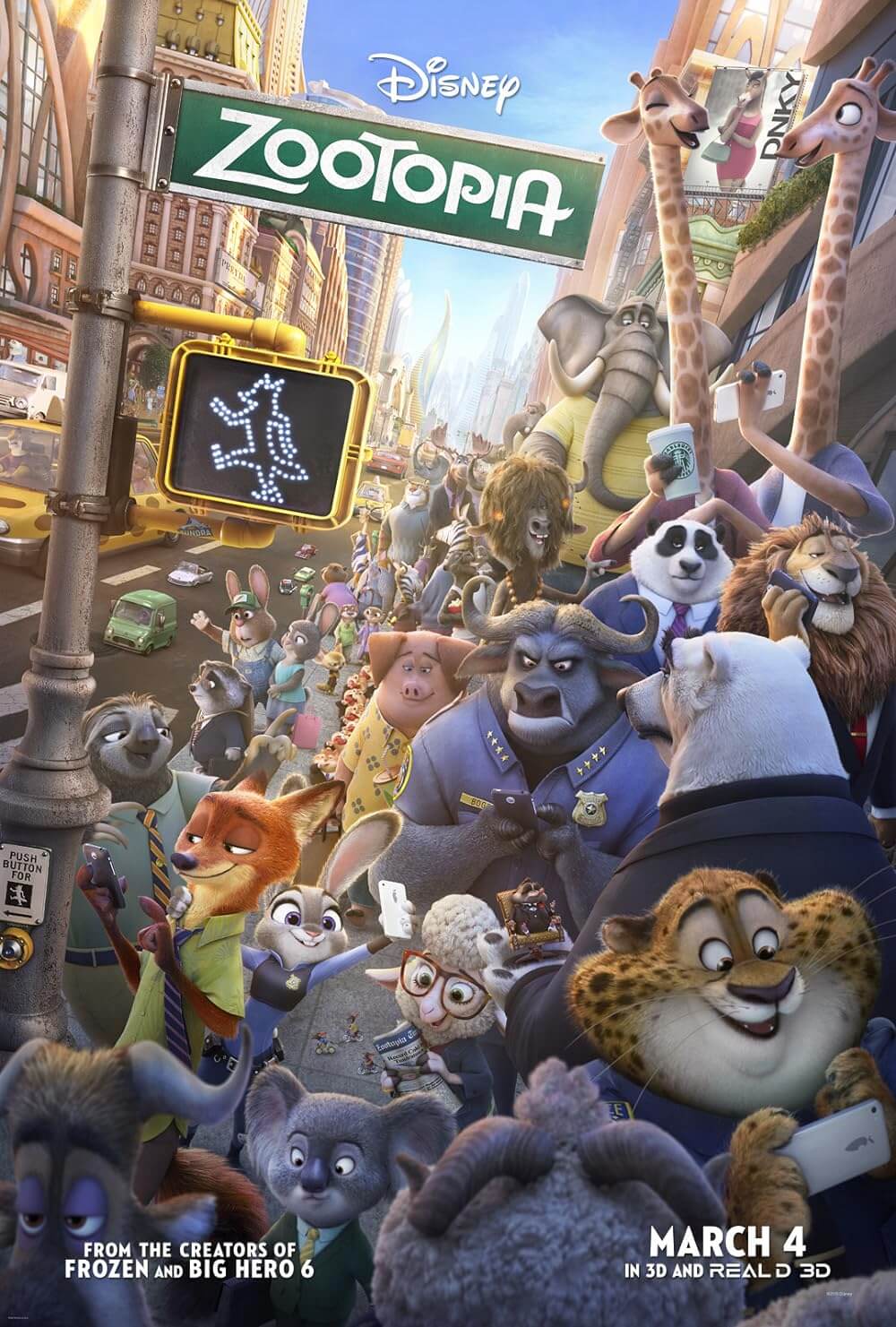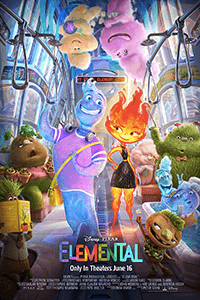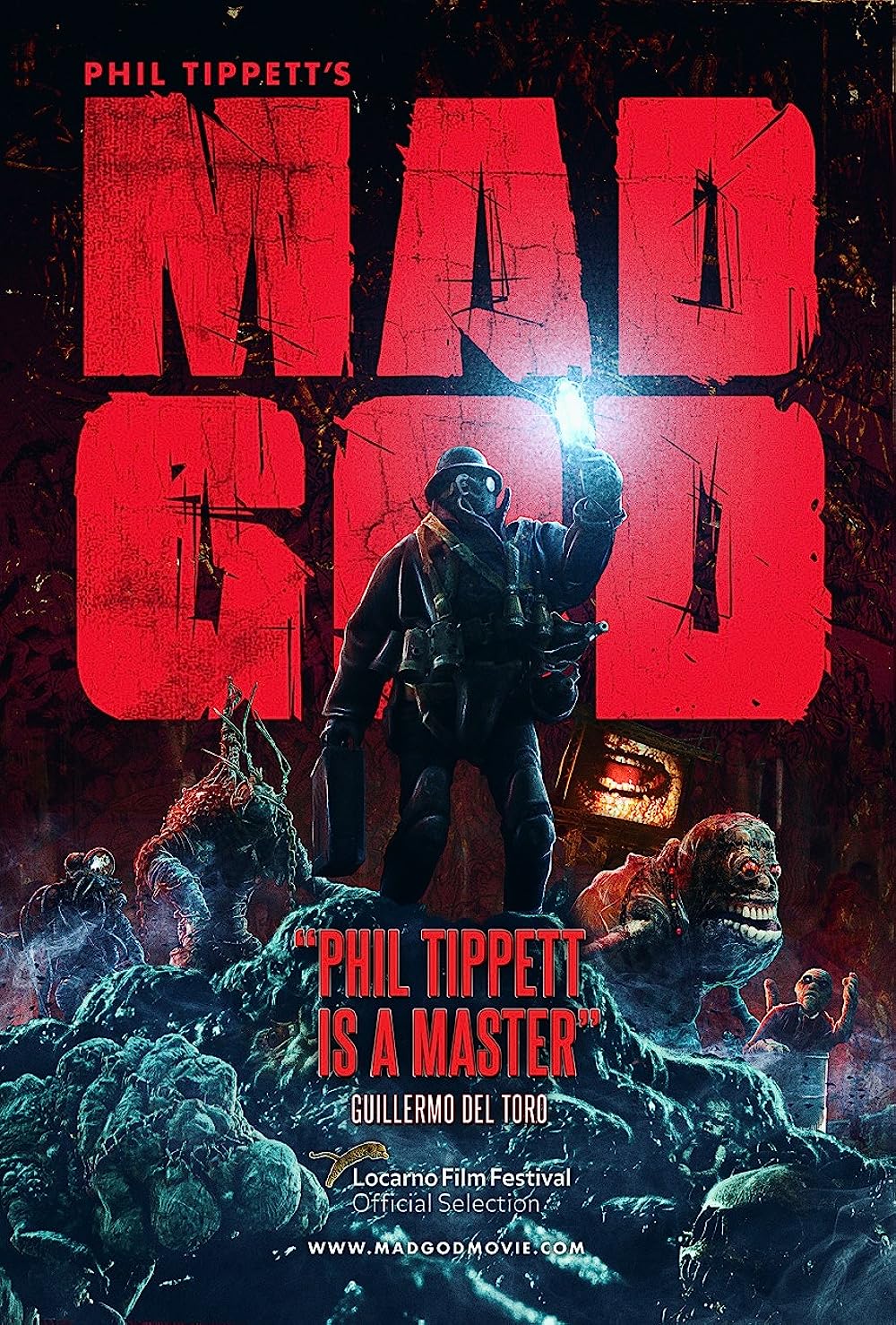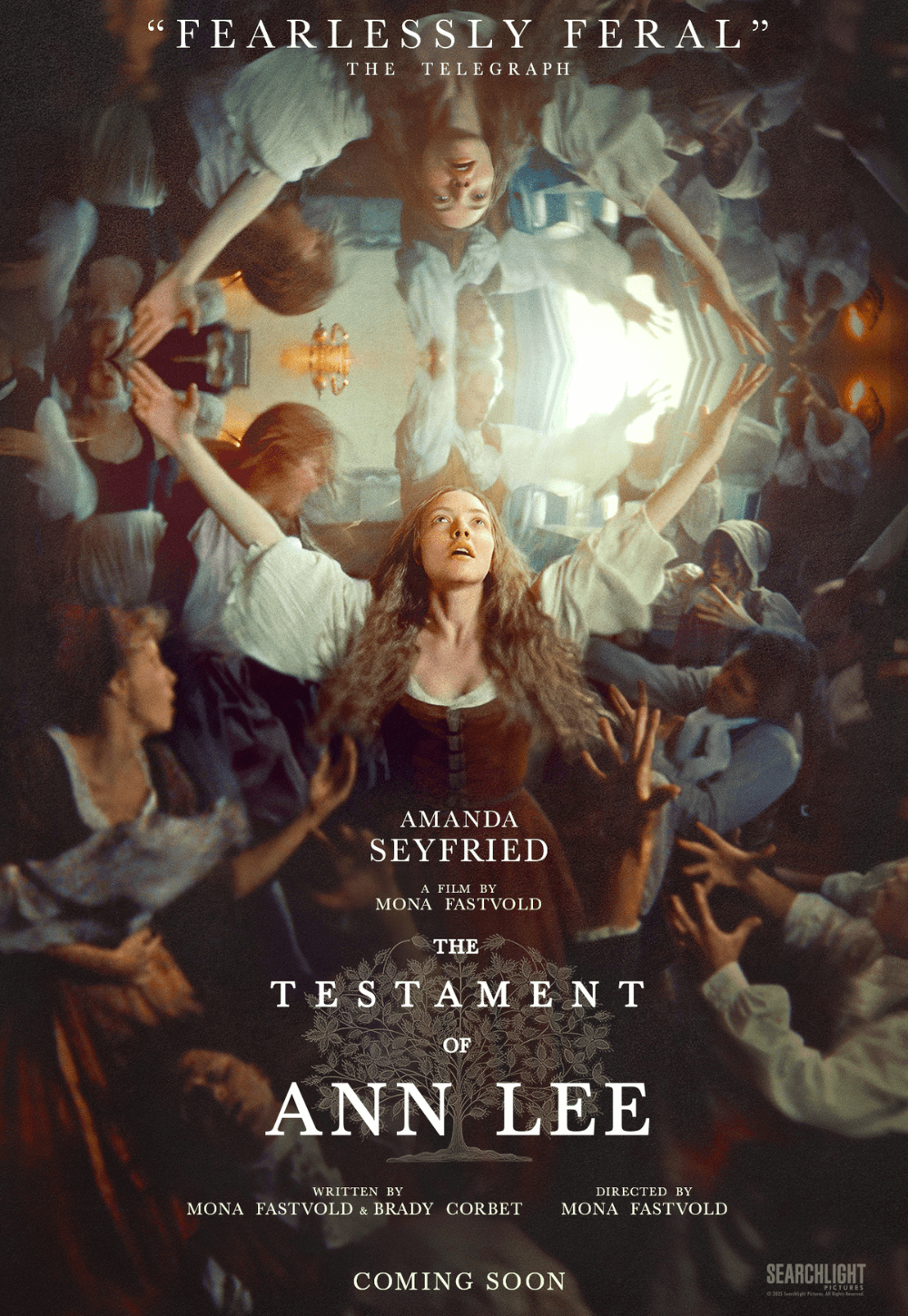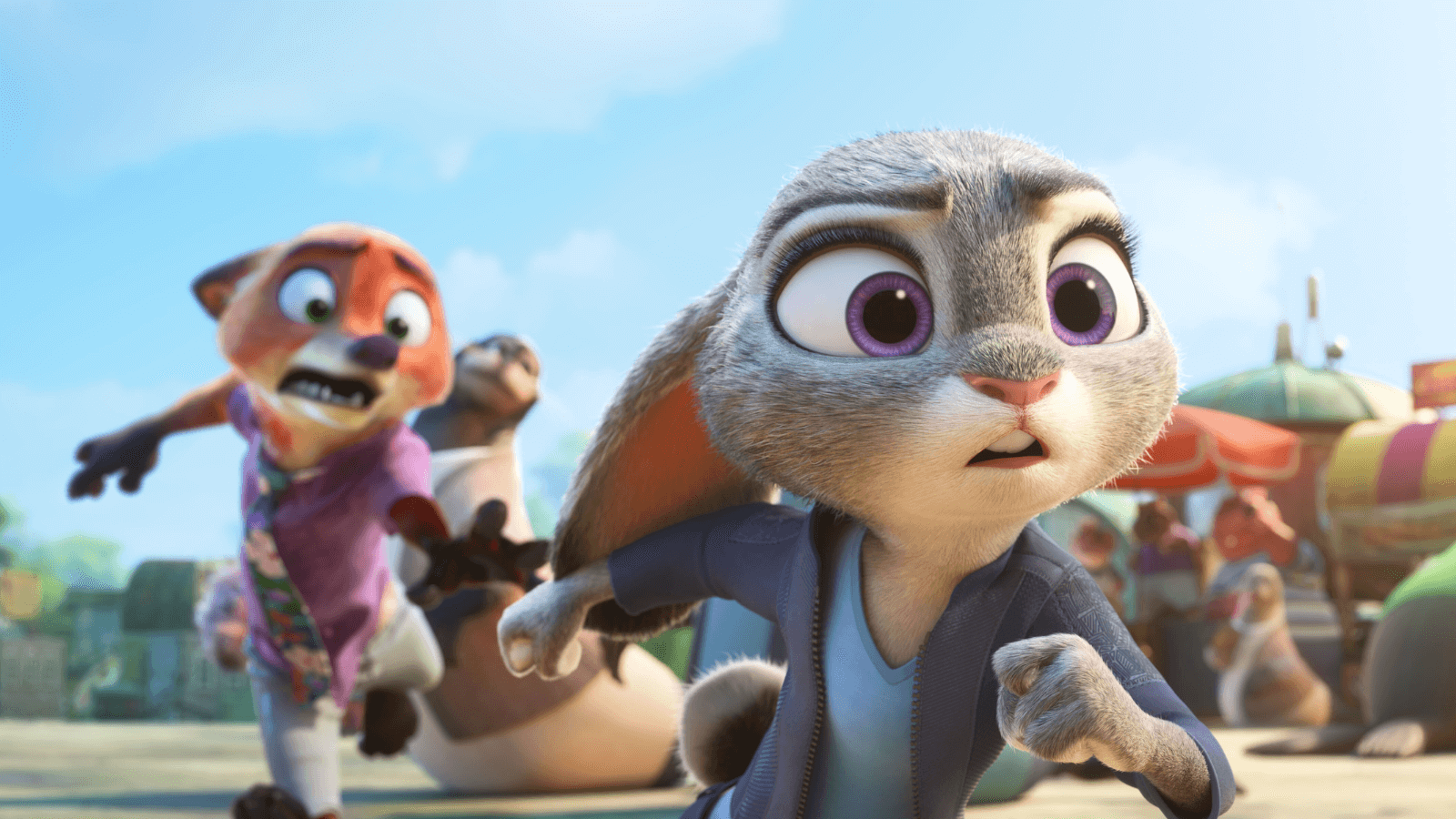
Zootopia 2
By Brian Eggert |
There’s no shortage of resonant themes and sociopolitical commentary in recent animated films, from the message about living in harmony with our environment in Disney’s Strange World (2022) to the parable about intolerance in Pixar’s Elemental (2023). Among the best of these is Zootopia (2016), an inspired concept about a metropolis that houses dozens of mammal species spread across weather-controlled quadrants. With a scenario that recalls a twisting neo-noir and a buddy cop movie—headed by the mismatched rabbit Judy Hopps (Ginnifer Goodwin) and fox Nick Wilde (Jason Bateman)—the material gives way to commentary on racism and prejudice. Should all rabbits fear foxes? Perhaps in the wild, but not in a movie where animals behave like humans do, complete with reasoning skills and an affinity for pants. The long-awaited sequel, Zootopia 2, contains a worthy message as well; beyond reinforcing its remarks against prejudice, it also warns about the diverse communities lost through gentrification and the species displaced by land development.
But the themes in this follow-up resonate less than the pleasure of the characters, the world they inhabit, and clever humor embedded into the script by Jared Bush, co-writer of the original. Bush, who also wrote Moana (2016) and Encanto (2021), also co-directs Zootopia 2 alongside Byron Howard. Even while crafting a tightly plotted mystery, the filmmakers make time for so many in-jokes that viewers are likely to miss them all. Even the casting is funny. There’s a fox named Michael J., voiced by Michael J. Fox, and Ed Sheeran plays a sheep named Ed Shearin. The examples could go on. The sequel overflows with visual gags, too, such as the ultra-serious basilisk lizard, Jesús (Danny Trejo), who suddenly looks goofy when he runs on water, earning the species the nickname “Jesus Christ lizard.” Once again, the animators and storytellers at Disney have outdone themselves in terms of character and world-building.
Indeed, Zootopia 2 introduces several new environments beyond the four sections of the metropolis separated by weather-controlled walls: Tundratown, Sahara Square, the Rainforest District, and Little Rodentia. Among the new locations is the Marsh Market, a swampy, ramshackle place for seals, hippos, and walruses, not to mention a speakeasy run by cold-blooded creatures. If you remember Zootopia, you’ll recall that the city is home to mammals only, meaning no reptiles live within the city’s walls. That’s not an oversight by the filmmakers, however; the sequel reveals that a deep-seated prejudice against reptiles exists in Zootopia, going back to the mastermind behind its construction. (The film also doesn’t mention birds at all. Maybe Disney plans to tell that story in Zootopia 3.) But the family credited with building the city, the filthy-rich Lynxleys—awfully cute but morally depraved lynxes—headed by fatcat Milton Lynxley (voiced by David Strathairn), has some buried secrets to keep.
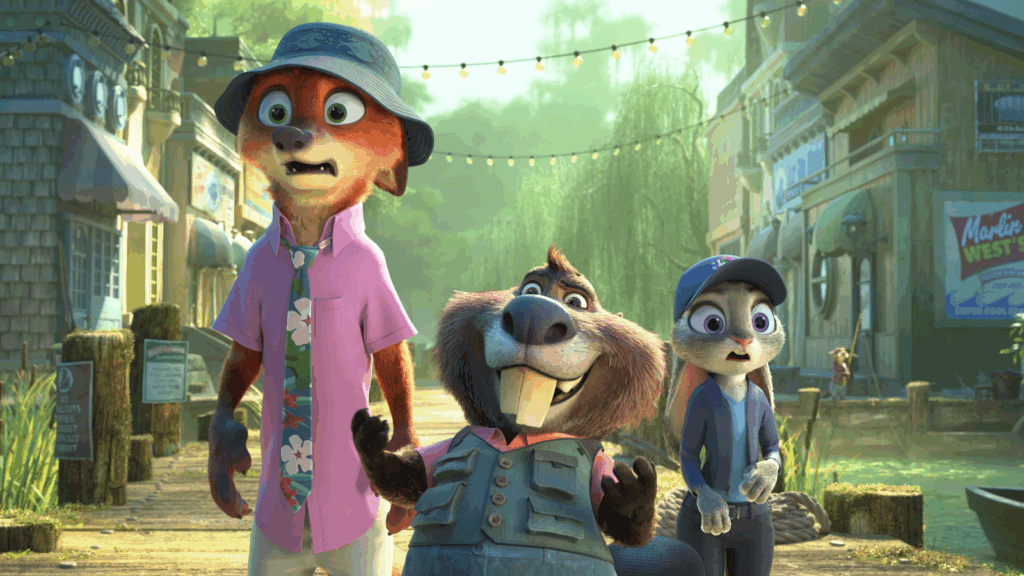
When the sequel picks up, Judy and Nick now both serve on the ZPD together, breaking the precedent of partners who tend to be of the same species. They’re an odd couple modeled after 48 Hrs. (1982) and Lethal Weapon (1987). And despite how they saved the city in the last movie, Chief Bogo (Idris Elba) questions whether they’re an effective team—they tend to disregard official procedure. Even so, with the centennial of the weather wall looming, Judy and Nick uncover a plot involving Gary De’Snake (Ke Huy Quan). This kindly pit viper has teamed with Milton Lynxley’s dopey son Pawbert (Andy Samberg) to find proof of the Lynxleys’ deception: an elitist scheme to get all reptiles and other “lesser animals” banished from Zootopia. With the help of a conspiracy theorist podcaster, a beaver named Nibbles Maplestick (Fortune Feimster), our heroes track down clues and expose the Lynxleys’ plot. All the while, in a tender subplot, Judy and Nick unpack their respective issues within the friendship: Judy’s control-freak behavior and Nick’s tendency to deflect genuine emotion with sarcasm.
The lively and colorful world of Zootopia 2 never ceases to evoke wonder and laughs, with Goodwin and Bateman’s voicework adding much by way of charm and personality. Over the last decade since the original, Disney has made some strides in photoreal lighting effects, and the water sequences look particularly good. Each frame teems with detail, making a second watch almost a requirement. Chases, a prison escape, and other stunning set pieces propel the story, keeping the 108-minute runtime moving. Taking a page from Pixar’s book, the filmmakers make an extended reference to The Shining (1980), complete with a snowy hedge maze, a crazed villain, and an iconic musical cue. But most of all, I enjoyed the visual humor around the animals, which kept a smile on my face throughout. However, much like the original, the weakest parts of Zootopia 2 involve the Shakira-voiced Gazelle, the resident superstar who sings banal pop music in two long sequences that feel like off-point music-video interludes, disrupting the story’s momentum.
Of course, one could pick nits about how the animals in Zootopia behave against their natural imperatives. In Nature, they would be eating one another; here, they live in relative harmony. But that’s the thing about intelligence, isn’t it? With intelligence comes the ability to recognize the harm in instinctual or inborn behaviors and, rather than follow their imperatives, make a different, better choice. That may raise questions about how the animals in Zooptopia survive nutritionally. (What do carnivores like Nick Wilde eat instead of meat from other animals?) But human beings can thrive as vegans, so perhaps the city has embraced veganism. Regardless, it’s a pleasure to visit this beautifully conceived world, filled with rich character designs, winking animal humor, and a narrative that gives way to evocative themes. I hope we get to visit again.
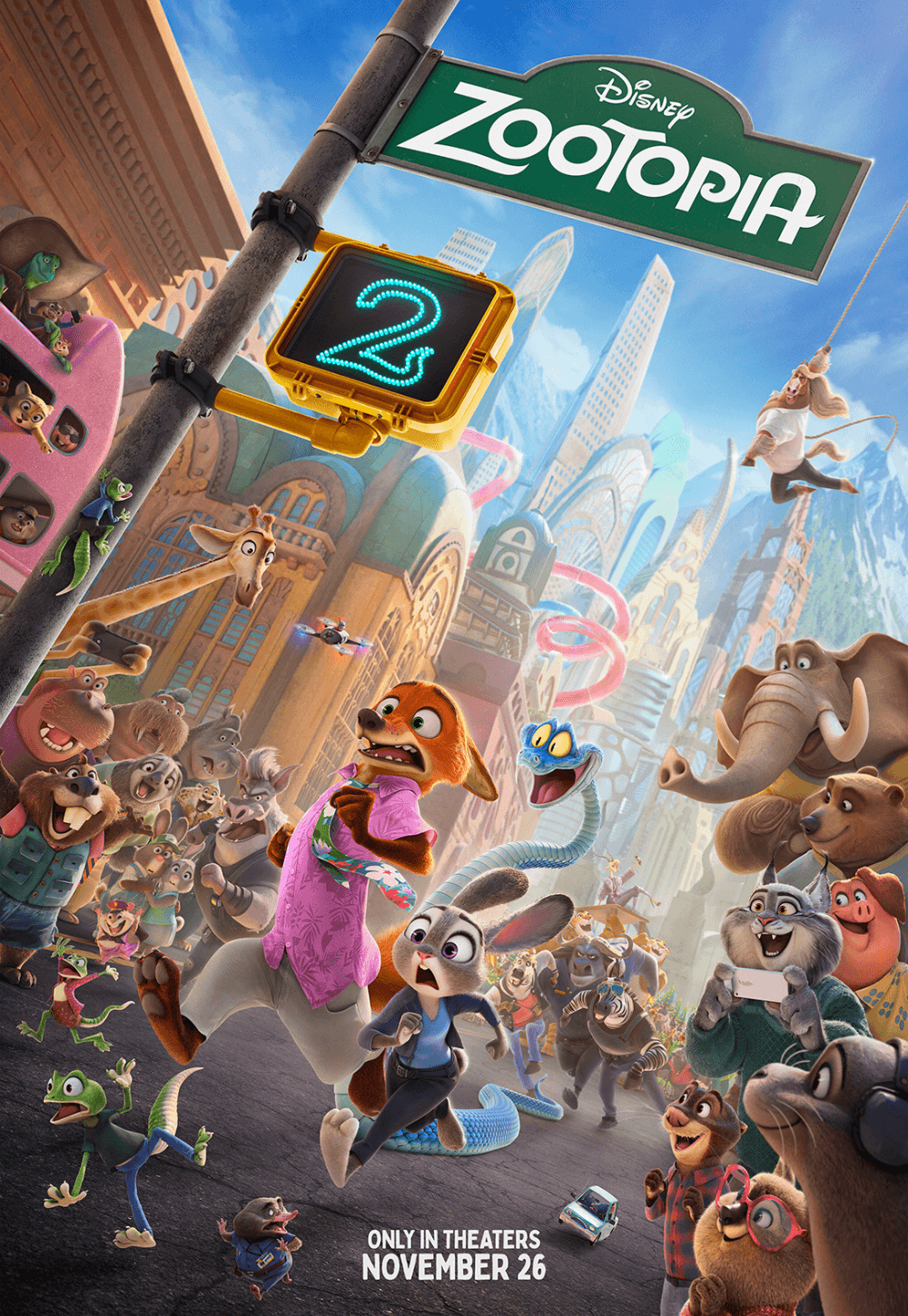
Thank You for Supporting Independent Film Criticism
As the season turns toward gratitude, I’m reminded how fortunate I am to have readers who return week after week to engage with Deep Focus Review’s independent film criticism. When in-depth writing about cinema grows rarer each year, your time and attention mean more than ever.
If the work on DFR has added something meaningful to your moviegoing—whether it’s context, insight, or simply a deeper appreciation of the art form—I invite you to consider supporting it. Your contributions help sustain the reviews and essays you read here, and they keep this space independent.
There are many ways to help: a one-time donation, joining DFR’s Patreon for access to exclusive writing, or showing your support in other ways. However you choose to support the site, please know that it’s appreciated.
Thank you for reading, and for making this work possible.
Brian Eggert | Critic, Founder
Deep Focus Review


